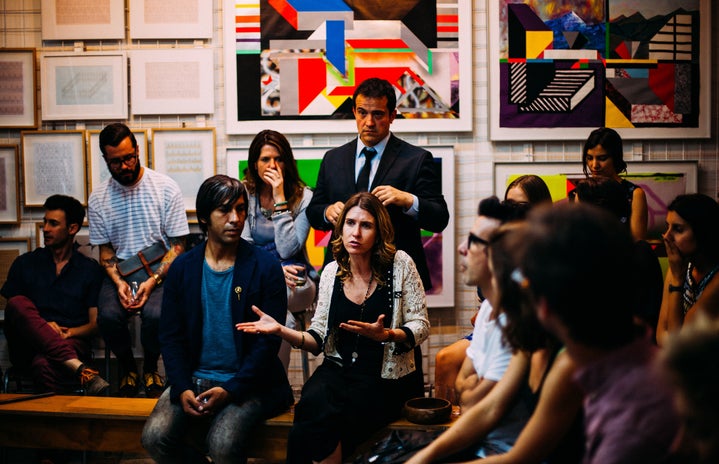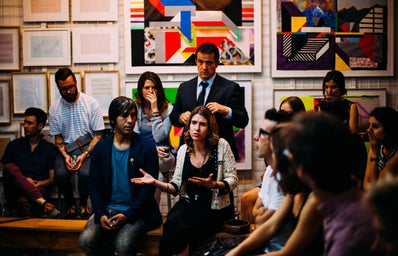“In the Hood” is an artwork by David Hammons that was first showcased in 1993 at the New Museum in New York City. The piece consists of a green hood, torn off a sweatshirt, and nailed to a stark white gallery wall. It forced its viewers to stare into the hallow, disembodied head of the sweatshirt mounted on the wall like a trophy, speaking on the way society ignorantly puts so many varying types of people into a singular image of veiled racism.
When this piece of art appeared on a slide show lecture in one of my classes, I was disappointed for two reasons. One: this work was made in 1993, yet nothing has changed; and two: I’d never seen it before. I think many people would agree that art is seemingly one of the most powerful forms of activism, yet artists continually make pieces like Hammons that go unnoticed. This made me wonder if the art world was really so small that such important things never leave the gallery?
Art itself claims to be a method of communication, a way for silenced voices to be heard. These lines of communication, however, seem to be broken, since they rarely ever reach a real world audience in the first place.
When it comes to art as a business, the people’s opinions count for so little. Curators have total control over what an audience sees in museums, and the museums have control of who they allow through their doors. Furthermore, galleries completely determine what good art is, basically choosing what’s worthy of sitting in a museum before a curator can even brainstorm ideas for an exhibit. They determine who’s in the circle and who’s left out. The art world often preaches diversity, but its exclusive circle is causing a complete lack thereof.
Knowing the information, it seems that the average person is powerless in determining what art is worth seeing, but I think that it’s just the opposite. Artists have the ability to make their art accessible to the public, and the public has the ability to support them. In today’s world, public art is the most common medium for this type of artist-audience interaction since most of it does stem from concepts that affect a broader public and strays away from pleasing the commercial art business. It’s tailored to the general public, which, in some ways, gives the artist more freedom than they would have in a gallery. Artists should take advantage of this medium to shift the culture of art from an exclusive venue to more a democratic, inclusive one.
I am by no means, however, claiming that public art is a new type of art, or that artists have never previously used public art to make a change. Artists have mixed public art and activism for generations. A perfect example is Adrian Piper, a philosopher and artist whose street performances were aimed at changing public perception on social constructs, gender biases, and racism. Her works includes a series of street performances dressed as her male alter ego, the “Mythic Being”, and a project entitled “My Calling Card”, which were actual cards that Piper would hand out to those who made a racist comment in her presence. The cards were part of a series Piper did with Guerrilla Girls, another feminist and minority activist group that is known for their street art, posters, and stickers placed around the world.
I do think museums do great work to showcase and preserve famous art; however, I think it may be even more important for audiences to support artists who truly stand up for the silent majority and make art accessible to the general public. Museums focus on preserving artifacts, but they sometimes forget about the people behind the art. Currently, art is valued by its scarcity, not its ideas. An audience should be able to relate to what it sees, and artists should be valued for their concepts, not solely their monetary value. It’s hard to say whether or not putting more art in the public eye would make a cultural different or enact change. We’ll never know until it’s there, but it does seem like it’s worth a try.


